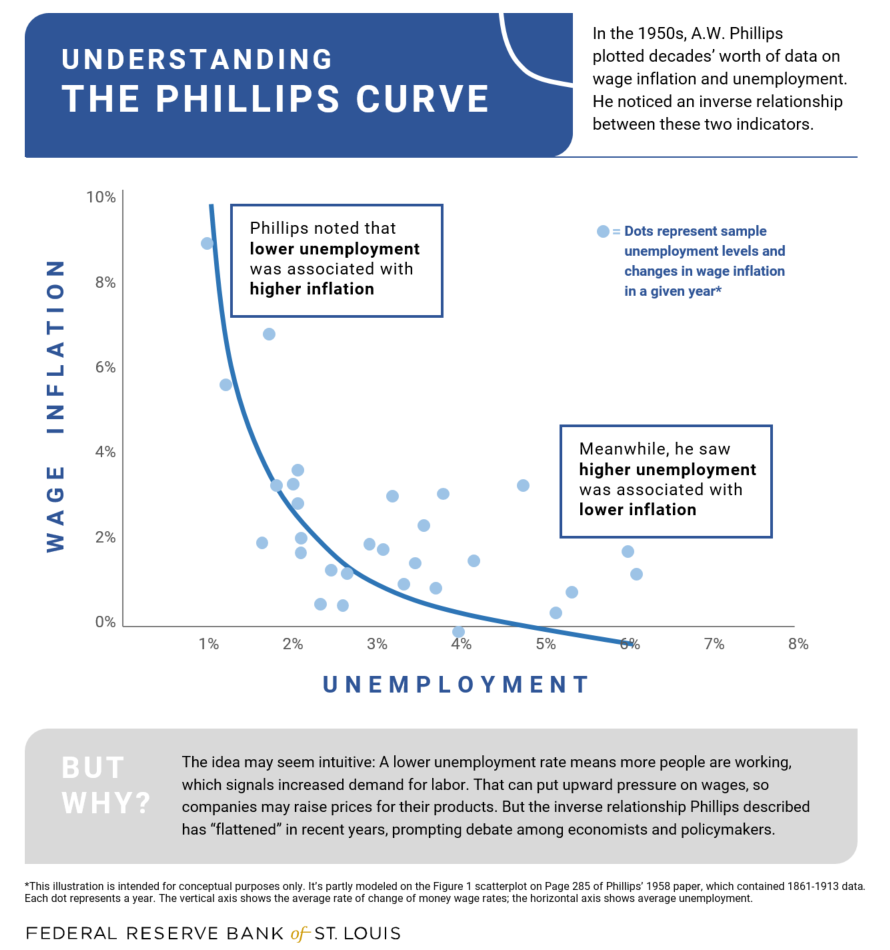- Employment is a factor in macroeconomic health of a country.
- More employment -> Decent Quality Life for most people.
- Tracked using unemployment rate tho.
Unemployment Rate:
- The percentage of working age adults actively looking for employment ( labour force ) but not getting it at any given time.
- higher unemployment rate -> economic crisis in country.
- However, unemployment rate may not be a good indicator of economic distress in a poor country. Why?:
- Because in poor countries underemployment is a bigger issue than unemployment, it just means that during an economic crisis the labour force tends to get job which doens't match that skill level and they end up doing labour which is not productive.
- This happens because in poor countries staying without a job is not affordable hence they take any job that they have so unemployment rate doens't really capture this well.
- 3-4% is common in most countries and is considered healthy as well because it shows people are switching jobs, exploring more opportunities etc. anything beyond this is considered scary or undesirable.
Inflation
- Definition :
-
t -> current year, b -> base year
-
A trade-off between inflation and unemployment was first identified by A.W.Philips leading to the so called (negativly sloped) Philips curve.
-
Lower Unemployment -> Higher inflation ( reasoning: more jobs->higher wages->increased spending->price increases)

Limitations:
- Stagflation (1970s): High inflation + High unemployment (breaking the Phillips Curve).
- Current economies show weaker correlation due to globalization and technological changes.
Fiscal Deficit
What is it?
- When the government spends more money than it earns.
- Technically it's defined as: Total Government Spending minus the total income + Money that was Borrowed
- Measured as a % of GDP (e.g., India’s fiscal deficit was 6.4% of GDP in 2022).
Why would it happen?
- High Spending: When government spends a lot of welfare schemes (free food, healthcare), infrastructure (roads, railways), defense etc.
- when the income reduces due to tax evasion, slow economic growth → less tax collection.
Is Fiscal Deficit Good or Bad?
- Good in recession as Keynesian says, bad during debt crisis.
| View | Argument | Example |
|---|---|---|
| Keynesian (Good in Short-Term) | Deficit spending boosts economy during recessions. | COVID-19: Govt gave free food (PMGKAY) + vaccines → saved lives & jobs. |
| Neoclassical (Bad in Long-Term) | Too much borrowing → inflation + debt crisis. | Sri Lanka (2022): Printed money → hyperinflation + bankruptcy. |
India’s Fiscal Deficit (2024-25)
- Target: 4.4% of GDP.
- Problem: If too high → Investors lose confidence → Rupee weakens → Fuel prices rise. (BUT NARENDRA MODI RISES LOL)
Structural Transformation
What is It?
- Economy changes from farming → factories → services over time.
- Example:
- 1980s India: 70% farmers, 20% factory workers, 10% services.
- 2020s India: 40% farmers, 25% factories, 35% services (IT, hotels, delivery apps).( 2025 stats will be all 10 minutes delivery)
Why Does It Happen?
- Agriculture Declines
- Machines replace farmers → Fewer jobs in farming.
- Example: Tractors → Less need for manual labor.
- Factories Grow
- Cheap labor attracts companies (e.g., China → "literally produces everything now").
- Services Boom
- IT (Infosys,TCS), food delivery (Zomato,Swiggy), tourism (Diu).
Problems in India
Employment Shift (Big Problem!)
- Agriculture: Still employs 41% people but contributes only 15% GDP → Low wages.
- Services: 53% GDP but only 33% jobs → Most jobs are informal (Swiggy delivery, street vendors).
https://en.wikipedia.org/wiki/Three-sector_model
